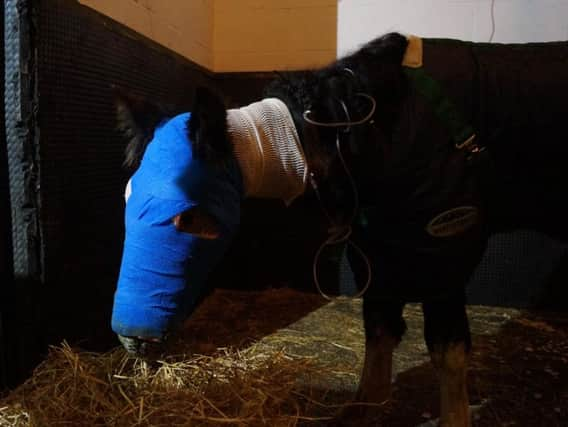Fish-skin dressings used on acid-attack pony in pioneering surgery


The eight-month-old cob filly, which has been named Cinders, was found dumped in Clowne, Derbyshire, last week and has been receiving treatment at Rainbow Equine Hospital in Malton, North Yorkshire.
Now, in a world first on a horse, vets have applied dressings made from the skin of tilapia fish to the wounds.
Advertisement
Hide AdAdvertisement
Hide AdTilapia dressings were first used on human patients last year by doctors in Brazil looking for cost-effective methods of treating burns and California vet Jamie Peyton, of the University of California Davis, had adapted the process for animals.
Hospital vet David Rendle said they had got in touch with Dr Peyton about the technique and she ended up flying to to the UK to take part in the pioneering surgery.
He said: “We were particularly interested in the use of tilapia fish skin dressings that she had been using to treat veterinary burns patients. We investigated means of shipping the tilapia dressings to the UK for Cinders when Jamie went one better and offered to bring them in person, with the support of University of California Davis Veterinary Medical Teaching Hospital.
“She and her veterinary nurse Krisie Vine, arrived in the UK on Monday.”
Advertisement
Hide AdAdvertisement
Hide AdAlso joining the team for the surgery was human burns and plastics surgeon Ryckie Wade, who had been offering the vets advice on how to treat the burns.
Once Cinders was anaesthatised, her previous dressings were removed and cold laser therapy and focused pulsed electromagnetic field therapy was applied to decrease pain and inflammation, kill bacteria and improve blood flow.
Mr Rendle said: “The entire surgery took approximately three hours. Cinders recovered from anaesthesia within 30 minutes and, true to form, was back in her stable eating within an hour.”
Mr Rendle said all veterinary time had been donated and a crowdfunding appeal had helped to fund Cinders’ treatment. He said if any money was left over in the fund after the treatment was finished, it would be used on future abandonment cases.